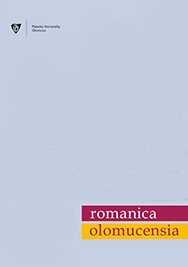Documentación notarial extremena del siglo XVII en Oralia diacrónica del espanol (ODE): el léxico de la vida cotidiana a través de inventarios de bienes pacenses
Notarial documentation from Extremadura in the 17th century in Oralia diacrónica del espanol (ODE): the lexicon of daily life through inventories of goods from Badajoz
Author(s): Inmaculada González SopeñaSubject(s): Theoretical Linguistics
Published by: Univerzita Palackého v Olomouci
Keywords: linguistic corpus; history of the lexicon; varieties of Spanish; notarial documentation; XML;
Summary/Abstract: The objective of this study focuses on, on the one hand, developing the methodology used in the elaboration of the corpus Oralia diacrónica del espanol (ODE) and the subcorpus CORTENEX S. XVII (Corpus de Textos Notariales Extremenos S. XVII), which is integrated into it, and, on the other hand, analysing the lexicon of daily life that is present in the inventories of goods from Badajoz. The methodology implemented in the preparation of ODE and CORTENEX is based on the use of new technological tools: 1) the transcription of documents in the XML language (eXtensible Markup Language), and 2) the digital presentation of documentation on the TEITOK platform, in which linguistic processing tasks (normalization, lemmatization, and morphosyntactic annotation) are performed. The result translates into an open access resource that allows the viewing of a semi-paleographic edition with the facsimiles and a digitized critical edition of the selected texts. In addition, this work focuses on the historical-linguistic analysis of two terms present in the notarial documentation from Extremadura and linked to the daily life of the 17th century in relation to certain household items and the materials of which they are composed - alioj and juera. Finally, this study offers new data on the variety of Spanish developed in Extremadura from a diachronic and diatopic perspective through the historical-linguistic analysis of two cases, but, also, it develops one of the most pioneering methodologies in the elaboration of a linguistic corpus based on the application of digital tools that allows philological and computational linguistic interests to be unified.
Journal: Romanica Olomucensia
- Issue Year: 34/2022
- Issue No: 1
- Page Range: 13-30
- Page Count: 18
- Language: Spanish

